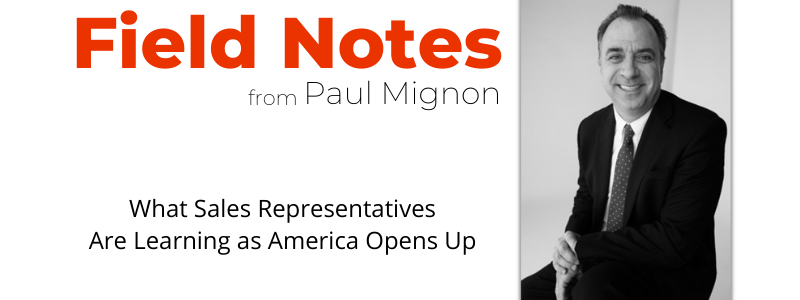What Every Field Force Should Know About Dorsal Fins
2020年7月30日
Working in healthcare, most of us have some idea about the major muscle groups. Biceps and triceps. Abs, quads, and hamstrings. Thanks to COVID-19, you may even have signed up for a virtual workout to train these very muscles.
What you don’t see online is any video explaining how to train your dorsal fin. And that brings me to the subject of this column: the field force of tomorrow. (Hey, it’s the middle of July and we’re in a heat wave. Let’s go with it.)
Dolphins use muscles of the dorsal fin to maintain stability and assist in sudden turns. In the same way—sort of—the field force is starting to “flex” a whole new set of software and social innovations for things like message iteration, real-time optimization and analysis.
I suppose we could swim in uncharted seas, including things like non-personal promotion (NPP), without some kind of fin. But look out for strange currents and big waves.
“As the pandemic continues, field reps and their managers are having to stretch muscles they never used before,” Celeste Mosby told me during a recent phone conversation about training. Celeste is Vice President for Solution Design in our CA Learning Solutions group, and no, she wasn’t talking about dorsal fins, but we’ll get there.
Comfortable silences
The new muscles Celeste described to me begin with non-traditional ways of paying attention. That’s something a lot of us have had to practice during the pandemic. “When you’re on a video call and don’t have the usual visual clues, you have to listen in a different way,” she said.
Maybe the person you’re speaking with doesn’t have permission to turn on the camera, or chooses not to do so. Everything is riding on how you respond to what you hear, or what you don’t. “Are you comfortable with silence?”Celeste asks. “Do you get nervous when there’s no answer to a question and no line of sight? More patience during the interaction and istening skills can make or break you.”
If reps are using new muscles, so are their managers. At Syneos Health, each of them must complete the same virtual skills training as the rep. They also use functions in Veeva Engage and other platforms to do “ride-alongs,” coach their teams in simulations, and assess their virtual upskilling capabilities and use of their new tools during live engagements. Is the rep getting quicker and more fluid with the tools? Are they able to layer on new skills? “It’s important to know,” Celeste says.
NPP and ABM
The move to virtual has created a much more challenging environment for sales reps. And it has drawn them deeper into the world of non-personal promotion (NPP) that marketing teams have had to navigate for a number of years.
With NPP, field forces now share the responsibility to amplify and extend brand reach through tailored 1:1 experiences, both face-to-face and virtual. That means becoming familiar with trends such as account based marketing (ABM) and programs like Folloze.
Leveraging such tools, the rep may be asked to create personalized URLs, or “boards,” populated with pre-approved material that’s specific to the physician or his/her organization. Marketing automation platforms like Marketo and SalesForce may also help the rep increase the sense of personalization without an in-person presence. Of course, an experience may not be meaningful if you can’t measure it. That’s where tools like Google Optimize enter the picture. Syneos Health has also developed a baseline impact evaluation survey which measures the competence and confidence of field teams and how they are adapting to the virtual environment both from performance and business impact perspective.
The heart of the matter
There are many other facets of NPP. I started with the easy ones, and maybe we’ll come back to this in a future column. But it’s important not to mistake all the high-tech razzle-dazzle for the real heart of commercial engagement. As I’ve said before, that’s the relationship between reps and medical teams.
To the extent that technology distracts from the relationship, it may even be a liability. Some providers have confided that they don’t pay close attention when lunches are virtual. Remember, they’re staring at laptops and iPads, not all looking up at the same 92-inch projector screen. I can think of a few distractions, and I’m sure they can, too.
“The virtual lunch is a good option, but it will never be as good for the relationship as face-to-face,” a member of our Value, Access and Medical team shared recently.
Training the dorsal fin is essential as we move into the deeper waters of NPP, and other still-mysterious realms. But our core strengths in building relationships are too important to leave behind.

